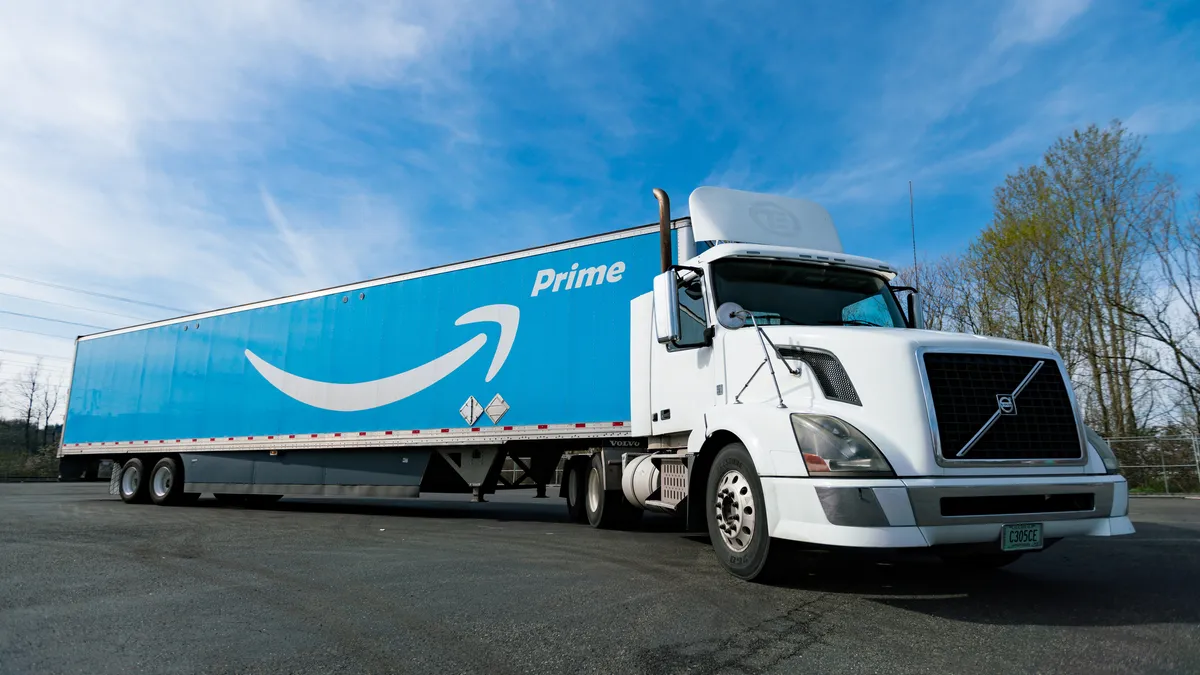Dive Brief:
-
Amazon is on pace to capture 9.6% of retail sales by 2020, according to a note from analysts at equity research firm Telsey Advisory Group cited by CNBC.
-
The e-commerce giant closed out the year with 5.6% of retail sales, and it has plenty of room to grow in grocery since its acquisition last year of Whole Foods Market as well as in categories like apparel, home, healthcare and media, according to the report.
-
But Amazon's growth isn't without pains, especially at its third-party marketplace. As it's opened up to more Chinese sellers, sales of counterfeits have proliferated, and some luxury sellers see Amazon as more problematic than Alibaba, according to a report from digital insights firm Gartner L2.
Dive Insight:
By several measures, Amazon is a juggernaut, with 100 million Prime members locked in globally and net sales that in the first quarter rose 43% to $51 billion.
But that doesn't mean that the e-commerce giant is unstoppable, especially when it comes to retail. In fact, Nick Egelanian, president of retail development consultants SiteWorks International, believes that Telsey analysts are off in their estimation by some 80% to 90%.
Amazon's sales last year were $179 billion, but not all were in retail, and half of its retail sales flow through the company's Marketplace. Siteworks doesn't qualify marketplace sales as straight retail because Amazon neither takes title to those goods nor has inventory risk. So that's 1% of U.S. retail sales as of January, by Siteworks' measure.
While several analysts doubt that Amazon's recent $20 Prime membership increase (from $99 to $119 each year, announced last month), will lose it many customers, Egelanian believes that consumer spending on Amazon's memberships is destined to slow.
"Two-thirds of U.S. households are income constrained, living paycheck to paycheck, and we expect Prime growth to slow considerably in coming years," he told Retail Dive in an email. “Add to that [Prime membership increase] up to $59 annually for Prime Panty customers, and some Amazon customers will see an 80% increase in Prime membership fees this year.”
Also likely to cut into Amazon's sales are apparent increases in product prices. It's a natural move to boost margins, but "consumers can no longer assume that they will automatically find the lowest prices at Amazon," Egelanian said. Amazon remains a price leader in several categories, with prices averaging 10% less than all other retailers studied by e-commerce analytics firm Profitero. But Walmart is getting aggressive with price matching, offering identical prices to Amazon on more than half (53%) of all products — compared to 37% matched by Target and 35% by Jet, Profitero also found.
"We expect to see slowing Amazon retail sales growth begin to recede as the effects of all these factors sink in coming months and years," he said. "Even without a slowing of growth, Amazon retail sales would have to double in two short years just to increase to 2% — let alone 10% by 2020."















